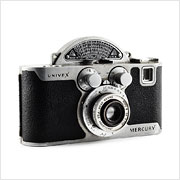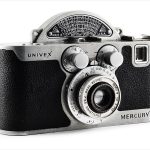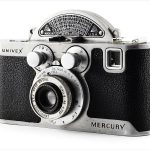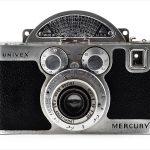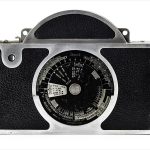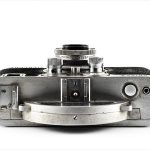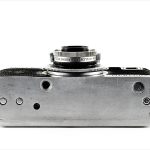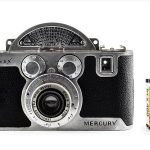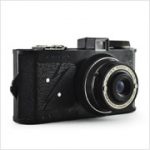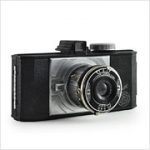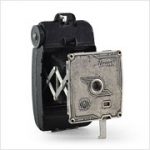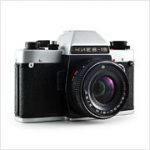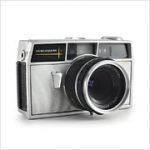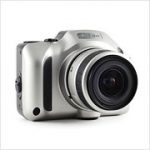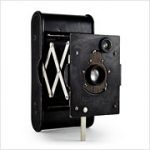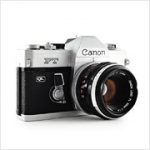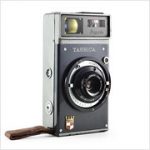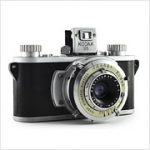Univex Mercury CC Specifications
| Manufacturer: | Universal Camera Corp. |
| Origin: | USA |
| Made in: | New York City, NY, USA |
| Introduced: | 1938 |
| Type: | Subminiature, Viewfinder |
| Lens Mount: | Univex Screw Mount |
| Format: | 35mm Film (half-frame) |
| Dimensions: | 13.5 x 9.7 x 4.1 cm (body only) |
| 13.5 x 9.7 x 5.4 cm (with lens) |
Univex Mercury CC Overview
The Univex Mercury CC is a half-frame viewfinder camera introduced by the Universal Camera Corporation of New York shortly before the beginning of World War II. Founded by individuals with no experience whatsoever in the photography business, Universal created cameras that were innovative but still simple enough to efficiently mass produce. Because they were only usable with proprietary film cartridges, Universal sold their cameras at very low prices, causing the brand to become synonymous in the United States with quirkiness and affordability.
The thing that most people notice first about the Mercury is the odd crescent-shaped protuberance from the top of the camera which accommodates the enormous rotary shutter. This innovative shutter design allowed for extremely accurate speeds ranging from 1/20 to an amazing 1/1000 seconds as well as Bulb and Time. Paired with the shutter is the standard Wollensak Tricor 35mm f/3.5 lens although there were several other lens options (also produced by Wollensak) available including a fantastic Hexar 35mm f/2.0. The primary innovation, however, is not the the ingenious shutter design but the invention of the hot shoe. While extremely common now, the Univex Mercury was actually the very first camera to combine an accessory (or “cold”) shoe with a flash synchronization contact, thus creating the very first camera hot shoe.
Control-wise, the Mercury is just as unusual as it looks. For starters, there are two shoes on the top plate of the camera, a cold shoe above the viewfinder, and the aforementioned hot shoe in the middle in front of the shutter casing which has a depth of focus scale printed on it. On the other side of the hot shoe is the silver shutter button with a threaded cable socket next to it. The two metal knobs above the lens are multifunctional. The one on the “Univex” side cocks the shutter and also serves as a frame counter while the knob on the viewfinder side is used to set the shutter speed and rotates with each shutter actuation. Focusing is done by rotating the lens mount while aperture is set using the front ring of the lens itself. There is also a detailed exposure calculator located on the back.
The Mercury was sold for $25 when it first debuted (a little over $430 in today’s economy) which was an absolute bargain compared to the German cameras that were gaining popularity at the time. It was also considered America’s fastest camera with its extraordinary 1/1000 second shutter speed until Universal created a variant of the Mercury called the CC-1500 that could do 1/1500. I bought this Univex Mercury on eBay for about $20 after watching auctions for months. It’s in pretty good condition with only some minor marks on its aluminum alloy body and some oxidation on the exposure calculator. Unfortunately, I don’t own any #200 series film cartridges for my pre-war model (the post-war model can accept standard 35mm film) so I can’t take it out for a spin.
Find your very own Univex Mercury CC on eBay.
McKeown, James M. and Joan C. McKeown’s Price Guide to Antique and Classic Cameras, 2001-2002. (Grantsburg, WI, USA: Centennial Photo Service, 2001), p 646.
